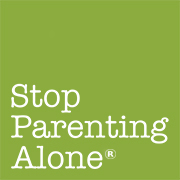What Science Tells Us
- Bilingual infants show larger signs of cognitive flexibility in addition to learning two languages
- Infants favor the two language their caregiver speak to them and tune out unfamiliar speech sounds of other languages
- Bilingual and Multilingual infants show more success in focusing in one task than monolingual children
- One study found that a minimum exposure of 30-40% for the minority language (in the U.S. anything other than English) would maintain a “good” exposure for children to maintain the language. If you can do more than 30% then the odds increase for maintaining a bilingual/multilingual child.
- Although a common myth, dual language learners do not have a delay in speech. Studies have shown that their language develops at the same time as monolingual toddlers.
- Young multilingual and bilingual children acquiring language (18 mo-36mo) will interchange words. This is normal and not a sign of confusion.
- An imposition of “English only” in the classroom or preschool is not conducive to a child feeling safe in their environment. When a child is first transitioning to school it is best to have someone speak to them in their native tongue &/or be conscious of his/her struggle.
- Parents are the best means for children to learn the parent’s native language. Quantity and quality communication (e.g. speak your native language while playing with your child) needs to continue through their developmental markers.
Dual Language/Multi-Lingual Learning at Home
- You do not need to speak to your children in English. Preserving your native language at home will help your child’s learning of English because it benefits cognitive development.
- To maintain your native language interesting to your child make available books, games, apps, movies and fun activities that include your native language
- You can add “native language talking time” to your routine. An hour a day can add up and help your child’s multi-lingual skills.
- Make sure to stick to speaking to your children in your native language. This gets harder as they get older but it is necessary. In this way you remain the source of exposure to the native language.
Helping Children Bridge Rather than Choose
- It is important to understand and be aware of the similarities and differences between the two cultures to which your child is exposed
- Be aware of making the child “choose” between the cultures. This creates a triangulation of the child’s experience and can hamper self-esteem.
- Become conscious that something you may see as rude or disrespectful is not necessarily practiced in the American Culture (e.g. a young child greeting an adult, having to share everything no matter what, using your words to express your internal wants and needs)
- Be willing to learn along with your child rather than see yourself as separate from their experience. Try the “new” cultures ways and traditions together.
- Expose your child to your values and your culture and discuss the differences openly through-out their development. This becomes very important in the adolescent years.
Resources for Bi-lingual children:
National Association for Bilingual Education
